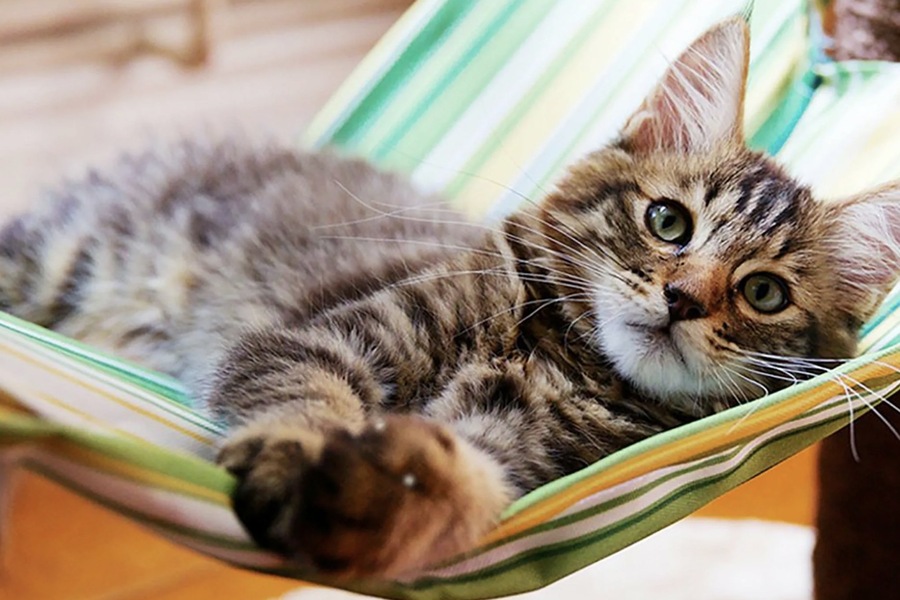When a kitten appears in your home, it brings a whirlwind of emotions. The excitement of a new family member is often mingled with concerns about how the kitten will adapt to its new environment and the responsibility of ensuring its comfort and well-being. The sudden change in surroundings and separation from its mother can be stressful for a kitten. To ease this transition, consider searching for cat grooming near me to find local services that can help keep your kitten clean and healthy. Here’s a detailed guide to help you prepare your home and make the transition as smooth as possible for your new furry friend.
Preparing Your Home
Safety First
Before bringing your kitten home, it’s crucial to inspect your living space for potential hazards. Kittens are curious and can easily get into trouble. Here are some safety measures to consider:
– Secure Windows and Vents: Ensure all windows and vents are closed or have screens to prevent your kitten from escaping or getting stuck.
– Hide Electrical Cords: Kittens may chew on cords, which can be dangerous. Use cord protectors or hide them behind furniture.
– Remove Small Objects: Small items can be choking hazards. Keep them out of reach.
– Block Nooks and Crannies: Seal off any small spaces where a kitten might get stuck or hide.
– Plants: Some houseplants are toxic to cats. Ensure that all plants in your home are safe for kittens.
– Chemicals and Cleaning Supplies: Keep these locked away in cabinets or high shelves.
Kitten-Proofing Checklist
To ensure you’ve covered all bases, here’s a quick checklist:
– Check for exposed electrical cords and cover or hide them.
– Remove small objects from floors and low tables.
– Secure windows and vents.
– Verify that houseplants are non-toxic.
– Store chemicals and cleaning supplies safely.
– Ensure there are no accessible small spaces or gaps where a kitten could get trapped.

Creating a Comfortable Environment
A Quiet Corner
Set up a quiet, cozy corner where your kitten can retreat and feel safe. This area should be away from high-traffic zones in your home. Equip it with:
– A Comfortable Bed: A soft bed or a house can provide a sense of security.
– Familiar Scents: Ask the previous owner or shelter for a piece of bedding that smells like the kitten’s mother or siblings.
– Blankets and Towels: These can provide additional warmth and comfort.
Environmental Enrichment
Kittens are naturally curious and playful. Providing a stimulating environment will help keep them entertained and reduce stress.
– Scratching Posts: Place multiple scratching posts around your home.
– Climbing Trees and Shelves: These allow kittens to climb and explore vertically.
– Interactive Toys: Toys that move or make noise can keep a kitten engaged for hours.
Dietary Considerations
Transitioning Food
Abrupt changes in diet can upset a kitten’s stomach. To avoid this:
– Keep the Same Food Initially: For the first week, feed your kitten the same food it was eating at the previous home or shelter.
– Gradual Transition: Slowly mix the new food with the old over a week to transition to the new diet.
Nutritional Needs
Kittens have specific nutritional needs to support their growth and development. Make sure to:
– Feed Kitten-Specific Food: These are formulated to provide the necessary nutrients.
– Monitor Food Intake: Ensure your kitten is eating enough but not overeating.
Health and Veterinary Care
Initial Veterinary Visit
Schedule a vet appointment soon after bringing your kitten home. Your vet will perform a comprehensive check-up, including vaccinations and parasite control. Regular veterinary visits are crucial for your kitten’s health.
– Vaccinations: Essential for preventing diseases.
– Deworming: Regular deworming is important to keep your kitten healthy.
– Microchipping: Consider microchipping for identification purposes.
Long-term Health Care
– Spaying/Neutering: Discuss the appropriate time for this with your vet.
– Dental Care: Start early with dental hygiene practices to prevent future issues.
– Regular Check-ups: Schedule annual or bi-annual visits for routine check-ups.
Understanding Kitten Behavior
Managing Stress
It’s normal for kittens to feel anxious in a new environment. They might hide, avoid contact, or seem scared. Here’s how to help them adjust:
– Stay Calm: Speak softly and avoid sudden movements.
– Give Space: Let the kitten explore and approach you on its terms.
– Routine: Establish a daily routine to provide a sense of normalcy.
Socialization
Proper socialization is crucial for a well-adjusted cat.
– Introduce Gradually: Introduce new people and pets slowly.
– Positive Reinforcement: Use treats and praise to encourage good behavior.
– Gentle Handling: Teach children to handle the kitten gently and respectfully.

Essential Supplies
Carrier
Choose a carrier large enough for your kitten to grow into. This will be useful for vet visits and travel.
Bowls
Purchase separate bowls for food and water. Ceramic or glass bowls are preferred as they are easy to clean and do not retain odors.
Litter Tray and Litter
It’s advisable to have two litter trays: one for urination and another for defecation. Use the same type of litter the kitten is used to.
Grooming Supplies
Invest in basic grooming tools:
– Brush: For regular grooming to prevent mats and reduce shedding.
– Furminator: Helps with shedding.
– Shampoo for Kittens: Gentle and formulated for their sensitive skin.
– Towel, Cotton Pads, and Eye Lotion: For general hygiene and cleaning.
Sleeping Arrangements
Provide a designated sleeping area:
– House: For shy or timid kittens who need a hideaway.
– Bed: For more active kittens who like to lounge.
Scratching Post
Kittens need to scratch to keep their claws healthy. Provide a vertical or horizontal scratching post to save your furniture.
Toys
Toys are essential for a kitten’s mental and physical stimulation. Consider:
– Interactive Toys: Fishing rods, ropes, and battery-operated toys.
– Solo Play Toys: Balls, mice, and climbing frames.
Conclusion
Bringing a kitten into your home is a joyful and rewarding experience. With proper preparation and understanding, you can create a safe, comfortable, and loving environment for your new family member. By following these guidelines, you’ll help your kitten transition smoothly and start building a strong bond from the very beginning. Remember, patience and love are key as your kitten adjusts to its new surroundings. Enjoy the journey of watching your kitten grow and become an integral part of your family.

I am a Junior Web Developer for Oswald Technologies. I am an accomplished coder and programmer, and I enjoy using my skills to contribute to the exciting technological advances that happen every day at Oswald Tech.
